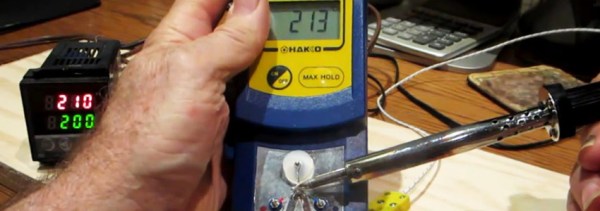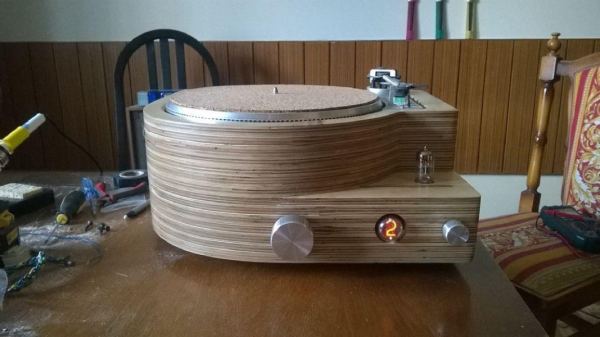Spending time at work sitting on the same drab chair can get boring after a while, even if you’re lucky to use a comfortable recliner. If you want to win the Office Olympics, you need something with a bit of pep. [StuffAndyMakes] wanted to build a completely ridiculous motorized office chair. A couple of years in the making, and he’s ready to unleash the 20 MPH IKEA Poäng chair with aerospace-inspired control panel!
The OfficeChairiot MkII, as he has christened it aptly, is a motorized IKEA Poäng comfy chair. It uses off-the-shelf scooter parts to roll around : Batteries, motors, chains, sprockets, tires, axles, and bearings. The OfficeChairiot MkII is basically three main parts – the Chassis, the Control Panel and the comfy chair. One of the main parts of the chassis is the motor controller – The Dimension Engineering Sabertooth 2×60 motor controller – which is also used in beefy battlebots. It’s capable of carrying 1,000 lbs. of cargo and can feed the drive system up to 60 amps per motor channel .
The brain on the chassis is an Arduino Mega which can be controlled via a hand held remote. The Mega also receives data from various sensors for motor temperature, power wire temperature, ambient air temperature, wheel RPM’s, Accelerometer’s, seat occupancy and GPS data. The firmware is designed to ensure safety. The hand held remote needs to ping the on-board Arduino twice a second. If it doesn’t hear from the Remote for whatever reason, the unit stops and turns off the lights.
The Control Panel is one crazy collection of switches, buttons, displays, a missile switch, a master key switch – in all over 30 switches and buttons. All of the devices on the panel are controlled via a second Arduino Mega, helped by a custom multiplexer board to help connect the large number of devices.
Here are a few more features the OfficeChairiot MkII boasts of :
- 1.5 Horsepower from two 500W scooter motors
- 20W stereo and MP3 sound effects
- Weapons sounds, 15 different fart sounds, car alarm, horns, etc.
- All LED lighting: Headlights, turn signals, 88 undercarriage RGB LEDs
- Plenty of homemade PCB’s
- Custom built aluminum body panels (with help from Local Motors, the people behind the 3D printed car)
Aside from the handcrafted wood chassis and circuits boards and firmware, it’s all off-the-shelf stuff. [StuffAndyMakes] plans on open-sourcing the schematics, C++ code and CAD drawings – so post some comments below to motivate him to do so soon. We’d sure like to see a few more of these being built, so that Office Chair racing becomes a competitive sport. Check out the video after the break.
Continue reading “20 MPH IKEA Poäng Chair With Aerospace-Inspired Control Panel” →

















